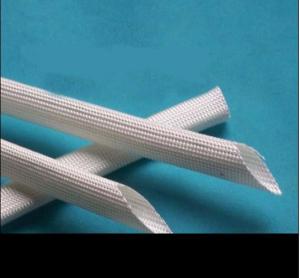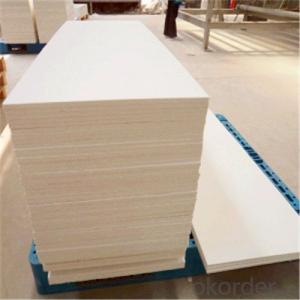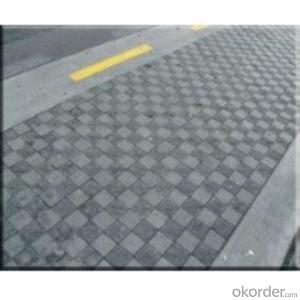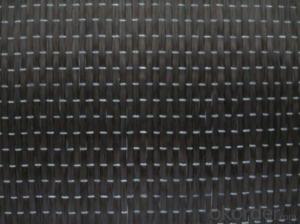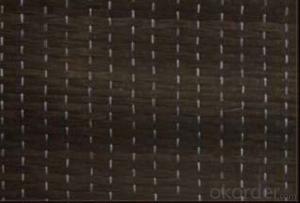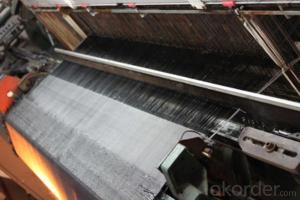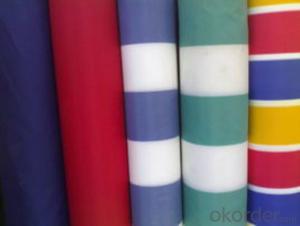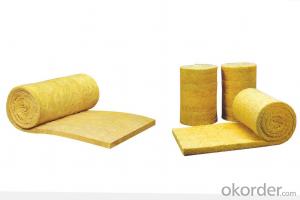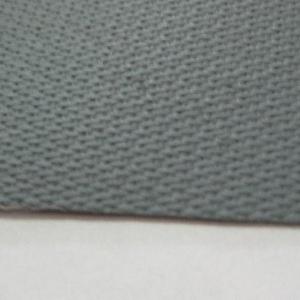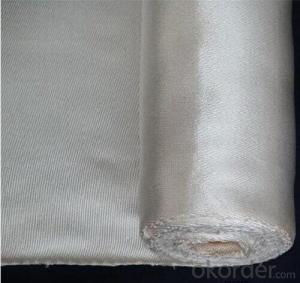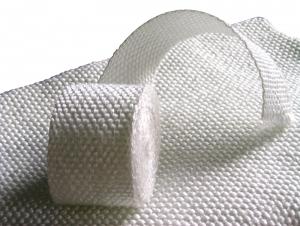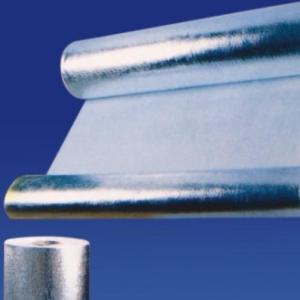Textured Fiberglass Sleeving
- Loading Port:
- China Main Port
- Payment Terms:
- TT or L/C
- Min Order Qty:
- 10 Tons kg
- Supply Capability:
- 2*20FCL Per Month kg/month
OKorder Service Pledge
OKorder Financial Service
You Might Also Like
general infomation of Textured Fiberglass Sleeving
Textured fiberglass sleeving is braided by the textured fiberglass yarn without core. It can be used as fire protection of cable or wire covering.
Characteristics of Fiberglass Sleeving
Cost-efficient high temperature performance
Texturized Fiberglass Sleeve is a heavy wall braided glass fiber sleeve capable of operating at a continuous temperature of 1000F (538C). High bulk fiber construction gives excellent insulation properties, and the texturized, untreated construction allows Thermosleeve to exhibit excellent dielectric strength and resistance to thermal conductivity.
specification of Textured Fiberglass Sleeving
Inner diameter: 13mm-75mm (1/2"-3")
Thickness: 1.5mm-3mm (3/50"-1/8")

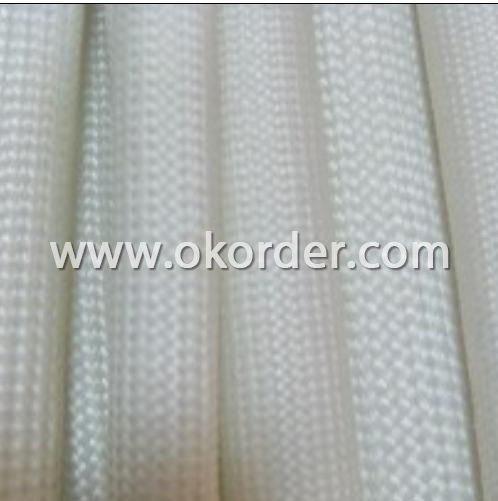
- Q:Are glass fiber textiles suitable for filtration applications?
- Yes, glass fiber textiles are highly suitable for filtration applications. Glass fiber textiles have excellent filtration properties due to their fine and dense structure. They are capable of capturing and retaining small particles, making them ideal for use in air and liquid filtration systems. Glass fiber textiles have a high filtration efficiency and can effectively remove pollutants, dust, and other contaminants from air or liquid streams. Additionally, glass fiber textiles are resistant to chemical degradation and can withstand high temperatures, making them suitable for applications where harsh environments are involved. They are widely used in industries such as automotive, aerospace, pharmaceuticals, and water treatment, where efficient filtration is crucial.
- Q:Can glass fiber textile be used in low-temperature applications?
- Glass fiber textile is indeed applicable for low-temperature uses. Its exceptional thermal characteristics, such as low thermal conductivity and strong resistance to temperature shifts, allow it to endure low temperatures without compromising its structural integrity or overall performance. Consequently, it is well-suited for a range of low-temperature applications, including insulation materials, cryogenic storage tanks, and cryogenic pipes. The ability of glass fiber textiles to effectively trap air and provide insulation is crucial in preventing heat transfer and maintaining a steady temperature in low-temperature settings. Furthermore, their resistance to moisture and chemical corrosion adds to their suitability for low-temperature applications.
- Q:Can glass fiber textiles be used in medical applications?
- Yes, glass fiber textiles can be used in medical applications. Glass fiber textiles are known for their high strength, durability, and resistance to chemicals, making them suitable for various medical applications. They are commonly used in surgical gowns, drapes, and other protective clothing due to their ability to provide a barrier against liquids and pathogens. Glass fiber textiles are also used in wound dressings and bandages, as they can provide support, promote wound healing, and allow for breathability. Additionally, they are used in prosthetics and orthotics to provide stability and reinforcement. However, it is important to note that glass fiber textiles can cause irritation or allergic reactions in some individuals, so careful consideration should be taken when using them in direct contact with the skin. Overall, glass fiber textiles have proven to be beneficial in medical applications due to their unique properties and versatility.
- Q:How does glass fiber textile perform in terms of static electricity resistance?
- Glass fiber textile has excellent static electricity resistance. Due to its non-conductive properties, it does not accumulate static electricity easily, making it a reliable choice in industries where static electricity control is crucial, such as electronics or cleanroom environments.
- Q:Are glass fiber textiles resistant to oil and grease?
- Glass fiber textiles possess a remarkable resistance to oil and grease. Due to their hydrophobic nature, glass fibers have the ability to repel water and other liquids, including oil and grease. Consequently, glass fiber textiles exhibit a high level of resistance to oil and grease, rendering them suitable for a wide range of applications that involve contact with these substances. The impermeable surface of glass fibers prevents oil and grease from permeating the fabric, enabling effortless cleaning and maintenance. Moreover, glass fiber textiles offer outstanding thermal resistance, mechanical strength, and chemical resistance, which has contributed to their widespread use in various industries, such as automotive, aerospace, and industrial manufacturing, where exposure to oil and grease is prevalent.
- Q:How do glass fiber textiles affect the drapability of fabrics?
- The drapability of fabrics can be significantly influenced by glass fiber textiles, also known as fiberglass textiles. When glass fibers are added to a fabric, it can increase its stiffness and rigidity, preventing it from naturally draping. This is because glass fibers, compared to commonly used natural or synthetic fibers in textiles, have a high tensile strength and are relatively inflexible. When glass fiber textiles are integrated into fabrics, they create a network of interlocking fibers that provide structure and stability to the material. This can be advantageous in certain applications, such as industrial or technical textiles, where a more rigid fabric is desired. However, in garments or home furnishings where drape and fluidity are important, the presence of glass fibers can be a disadvantage. The stiffness caused by glass fiber textiles can limit the movement and flow of the fabric, resulting in a less natural drape. Fabrics containing glass fibers may not hang as smoothly or gracefully as those without, and may appear more rigid when worn or used for drapery. Furthermore, the presence of glass fibers can alter the feel and texture of the fabric, potentially making it less comfortable against the skin. It is important to note that the impact of glass fiber textiles on drapability can vary depending on the concentration and distribution of the fibers within the fabric. Higher concentrations of glass fibers or a more tightly woven or knitted structure generally have a more significant effect on drapability. Overall, although glass fiber textiles can offer advantages in terms of strength and stability, they can negatively affect the drapability of fabrics. Designers and manufacturers should carefully consider the intended application and desired characteristics of a fabric before deciding whether to incorporate glass fibers or explore other alternatives.
- Q:Can glass fiber textiles be used in insulation tapes?
- Glass fiber textiles are indeed applicable in insulation tapes. Renowned for their outstanding thermal insulation properties, high tensile strength, and resistance to heat, fire, and chemicals, glass fiber textiles prove to be an ideal choice for insulation tapes. Employing these textiles aids in preventing heat transfer, thereby reducing energy loss and enhancing insulation efficiency. Moreover, the tape's durability is ensured by the glass fibers' impressive tensile strength, allowing for secure and intact insulation placement.
- Q:Can glass fiber textiles be used in conveyor belts?
- Yes, glass fiber textiles can be used in conveyor belts.
- Q:Can glass fiber textiles be used in the electronics industry?
- Yes, glass fiber textiles can be used in the electronics industry. They possess properties such as high thermal stability, electrical insulation, and resistance to chemical degradation, making them suitable for various applications in electronics, including circuit boards, insulation materials, and protective coatings.
- Q:Can glass fiber textiles be used in furniture?
- Glass fiber textiles, or fiberglass, have a wide range of applications in furniture. This versatile material is lightweight, strong, and durable, making it an excellent choice for constructing furniture. Chairs, tables, and shelves can all benefit from the reinforcement and strength that fiberglass provides. Furthermore, the moldability of fiberglass allows for the creation of unique and innovative furniture designs. Its resistance to moisture, chemicals, and UV radiation also makes it suitable for both indoor and outdoor furniture. Combining fiberglass textiles with other materials, such as wood or metal, can create hybrid furniture pieces that offer the advantages of both materials. Overall, glass fiber textiles have numerous advantages that make them a viable option for furniture manufacturing.
1. Manufacturer Overview |
|
|---|---|
| Location | |
| Year Established | |
| Annual Output Value | |
| Main Markets | |
| Company Certifications | |
2. Manufacturer Certificates |
|
|---|---|
| a) Certification Name | |
| Range | |
| Reference | |
| Validity Period | |
3. Manufacturer Capability |
|
|---|---|
| a)Trade Capacity | |
| Nearest Port | |
| Export Percentage | |
| No.of Employees in Trade Department | |
| Language Spoken: | |
| b)Factory Information | |
| Factory Size: | |
| No. of Production Lines | |
| Contract Manufacturing | |
| Product Price Range | |
Send your message to us
Textured Fiberglass Sleeving
- Loading Port:
- China Main Port
- Payment Terms:
- TT or L/C
- Min Order Qty:
- 10 Tons kg
- Supply Capability:
- 2*20FCL Per Month kg/month
OKorder Service Pledge
OKorder Financial Service
Similar products
New products
Hot products
Hot Searches
Related keywords
